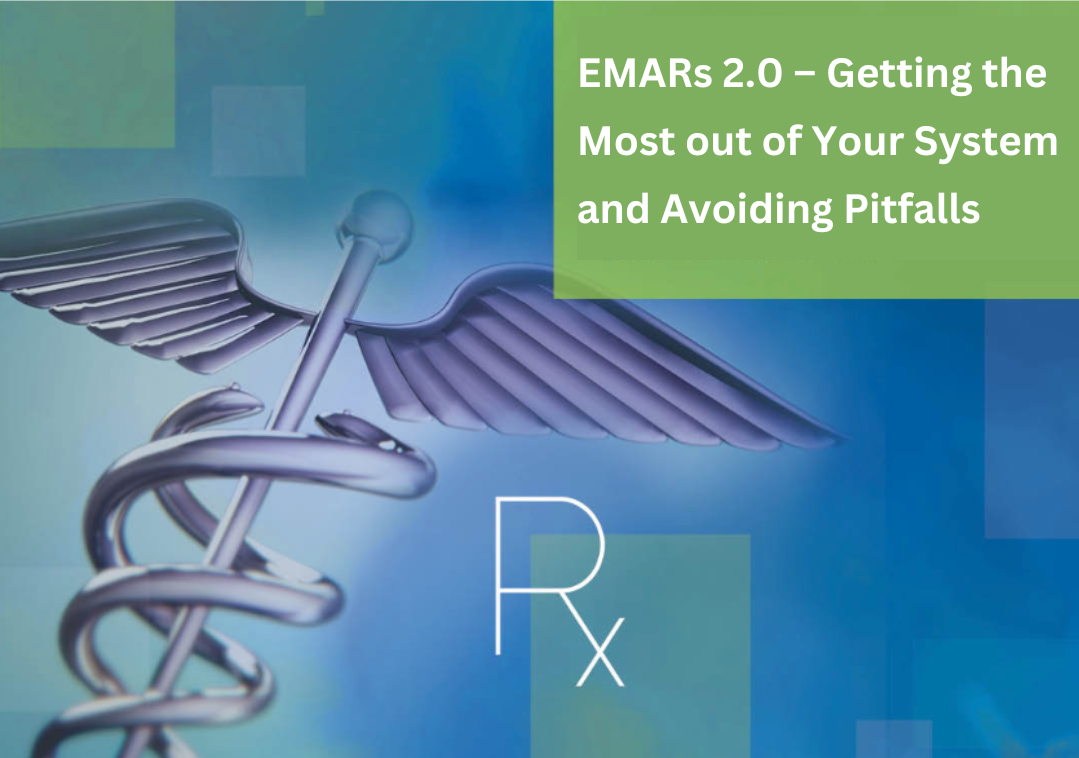Bridging the Gaps Between EMAR Interfaces
Bridging the Gaps Between EMAR Interfaces
Technology has vastly improved the opportunities for electronic medication ordering and immediate, accurate health record reporting. Although a number of operating systems are available to long-term care providers to meet their EMAR needs, not all systems communicate with pharmacy interfaces seamlessly. A recent webinar hosted by Forum Extended Care Services, “EMRs 2.0 —Getting the Most Out of Your System and Avoiding Pitfalls,” focuses on the obstacles facilities and pharmacy providers encounter during medication transactions and how to avoid them.
Whether a med order originates from the pharmacy or the facility, there are challenges. Pharmacies have the sheer volume of medications to confirm, prepare and send to facilities. Electronic orders may be delayed or rejected for a variety of reasons, such as discrepancies in resident information or dosages, for example. If there is an issue, a message will be sent to the facility to be resolved before fulfillment. Address the issue as soon as possible, keeping your orders on track.
On the facility side, the order submitted must be completed accurately with all information double-checked before sending—a missed diagnosis, an unchecked item, or other missing information can delay delivery. If a medication order fails to go through the interface, faxing comes into play. The faxed order should be kept in a separate bin or basket for easy access. Whether entered into the system or faxed, accuracy eliminates simple human error issues.
Also be vigilant when entering start/end dates for medications and therapies. If inaccurate, the system will default to the order date, which may not be correct. If the resident, for example, is running low on a med but still has 3 tablets left on August 1, the new order start date would be August 5.
While there are very few strangers to the world of telecommunication, specific program competence is essential. For the best results, nurses ordering medications must be fully trained on your system. Do you have an in-house specialist, a “Super User,” to guide them? If not, identify someone to serve in this capacity to field staff questions relating to the EHR and act as a point-person to liaise with the pharmacy or your system vendor when necessary. Your pharmacy vendor may serve as a resource, conducting an on-site training session to explain why some transmission issues between system interfaces occur and how to correct them. For managers, monthly or quarterly monitoring can track errors, missed meds, scanned meds, order entries, and reconciliations to show how well your interface is performing and what areas need attention.
At the point where all questions have been resolved and medications delivered to the facility, check each against the original order. If your system requires it to be scanned or linked, do it and double-check the scan/link. Note: If a med made it to the med cart without a scan or link, it might not show that it is ready to be administered.
Good med pass habits to encourage:
- Before each med pass review pending orders in their entirety. The order will not pop up unless it is approved. If the medication made it to the cart without being scanned/linked, do so at that point.
- At the end of shift, once again, review pending orders and document all missed meds.
For in-depth information on this topic, access Forum’s July webinar, “EMRs 2.0 —Getting the Most Out of Your System and Avoiding Pitfalls” and click here to download a free tip sheet.
